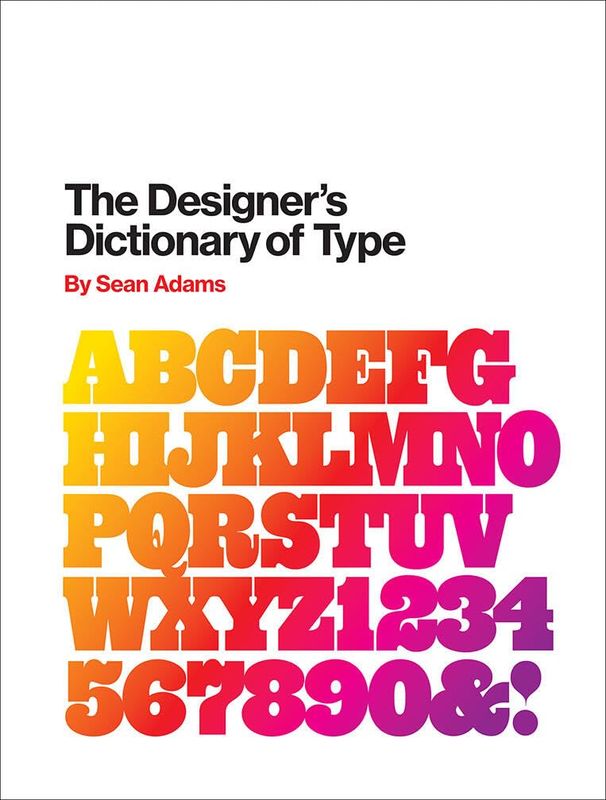Making and Breaking the Grid, Second Edition, Updated and Expanded Book Summary
In 'Making and Breaking the Grid,' Timothy Samara explores the fundamental principles of grid-based design, offering a masterclass on how to create compelling layouts. This updated edition unpacks both traditional and contemporary grid systems, providing designers with the tools to master visual hierarchy and composition. With a blend of theory and practical examples, Samara challenges readers to push the boundaries of conventional grids, igniting their creativity. Additionally, the expanded content includes fresh insights and stunning visual case studies that demonstrate the grid's flexibility and impact. Whether you're a seasoned designer or a budding artist, discover how to harness the grid to elevate your work to new heights.
By Timothy Samara
Published: NaN
""In design, as in life, it’s not just about adhering to the rules, but knowing when to bend and break them to create something truly original.""
Book Review of Making and Breaking the Grid, Second Edition, Updated and Expanded
A comprehensive layout design workshop that assumes that in order to effectively break the rules of grid-based design, one must first understand those rules.
Book Overview of Making and Breaking the Grid, Second Edition, Updated and Expanded
About the Book Author
Timothy Samara
Timothy Samara is a distinguished author and educator known for his contributions to the fields of graphic design and visual communication. With notable works such as 'Designing for the Digital Age' and 'Making and Breaking the Grid', Samara has established himself as a leading voice in design literature, exploring the intersections of aesthetics and functionality in modern design. His writing style is characterized by clear, insightful guidance, often accompanied by practical examples that empower both novice and experienced designers to enhance their creative practices.
Book Details
Key information about the book.
- Authors
- Timothy Samara
- Published
- N/A
- Publisher
- Quarry Books Editions
- ISBN
- 163159284X
- Language
- English
- Pages
- 243
- Genres
- Graphic DesignDesign
Purchase Options
Support local bookstores: BookShop gives a portion of each sale to independent bookshops!
Similar books you might like →
Identity Designed Book Summary
In 'Identity Designed,' David Airey takes readers on a captivating journey through the art and science of branding. This visually stunning book showcases a rich collection of global identities, revealing the strategies behind their creation. Airey delves into the psychological impact of design, urging readers to think deeply about how branding shapes perceptions. With insightful case studies and expert commentary, it sparks curiosity about the essence of identity in modern culture. Perfect for designers and entrepreneurs alike, this book invites you to explore the power of visual storytelling in building a brand.
The Lords of Easy Money Book Summary
In 'The Lords of Easy Money', Christopher Leonard unveils the hidden machinations behind America's financial system, revealing how a select few wield unprecedented power over the economy. The book delves into the controversial role of the Federal Reserve and its unorthodox policies during crises, painting a vivid portrait of greed, crisis, and desperation. Leonard explores the impact of these decisions on everyday citizens, making the complex world of finance accessible and alarming. With gripping narratives and insightful analysis, this book raises crucial questions about wealth and inequality in our society. Prepare to question everything you thought you knew about money and power.
Better Web Typography for a Better Web Book Summary
In 'Better Web Typography for a Better Web,' Matej Latin unveils the transformative power of typography in web design. He delves into the principles of effective type, demonstrating how thoughtful choices can enhance user experience and engagement. The book is packed with practical tips and real-world examples to help designers craft visually stunning and readable websites. Latin's insights challenge conventional norms, urging readers to rethink their approach to typography. This essential guide equips both aspiring and seasoned designers with the tools to elevate their craft and create a more beautiful web.
The Visual History of Type Book Summary
'The Visual History of Type' by Paul McNeil is a stunning exploration of typography's evolution throughout history. This richly illustrated tome uncovers the stories behind iconic typefaces and the designers who created them. Readers will marvel at the interplay between type and culture, revealing how lettering has shaped our visual landscape. McNeil's passion for the subject shines, offering insights that provoke thought and inspire creativity. Dive into this captivating journey that promises to change the way you perceive the world of type!
A Book Apart: On web typography - Jason Santa Maria Book Summary
In 'A Book Apart: On Web Typography,' Jason Santa Maria unveils the critical art of type on the web, exploring how typefaces can shape user experience. Delve into the interplay between design and readability, and discover how thoughtful typography can enhance digital communication. With practical insights and inspiring examples, Santa Maria challenges conventional wisdom and encourages designers to push the boundaries of creativity. This book is not just a manual; it's an invitation to rethink how we present words online. Whether you're a seasoned designer or a curious newcomer, this exploration of typography will transform your understanding of web aesthetics.
Typography Essentials Revised and Updated Book Summary
In 'Typography Essentials Revised and Updated', Ina Saltz unveils the fundamental principles of typography that every designer should master. With rich illustrations and practical examples, she guides readers through the art and craft of type, making complex concepts accessible and engaging. Discover how type choices influence communication and the emotional impact of design. This revised edition includes the latest trends and technologies shaping the typographic landscape today. Whether you're a novice or a seasoned pro, this book will inspire you to see type in a whole new light!
The Designer's Dictionary of Type Book Summary
Delve into the fascinating world of typography with 'The Designer's Dictionary of Type' by Sean Adams. This comprehensive guide unravels the intricacies of typefaces, revealing their unique personalities and historical contexts. Each entry offers insights that inspire creativity and enhance design skills, making it an essential reference for both novice and seasoned designers. With stunning visual examples, the book encourages a deeper appreciation for the art and science of type. Discover how the right type can transform your work and captivate your audience!
The Evolution of Type Book Summary
'The Evolution of Type' by Tony Seddon takes readers on a captivating journey through the history and development of typography. Delve into the transformation of typefaces from ancient inscriptions to modern digital fonts, revealing the intricate relationship between technology and design. Seddon artfully illustrates how cultural shifts and artistic movements have influenced type development, creating a visual narrative that enchants both designers and history enthusiasts alike. With rich illustrations and engaging anecdotes, this book invites you to appreciate letters not just as tools for communication, but as dynamic art forms. Discover how type influences our daily lives in ways you’ve never considered, and why every letter tells a story.
Showing 8 of 30 similar books
Similar Book Recommendations →

Dustin Moskovitz's Book Recommendations
Dustin Moskovitz is an American entrepreneur and co-founder of the social networking website Facebook, which has become one of the most influential platforms globally. He later co-founded Asana, a popular work management tool designed to help teams orchestrate their work, from daily tasks to strategic initiatives. While Moskovitz is not primarily known for contributions to literature, his impact on the tech industry and workplace productivity has been widely documented and analyzed in numerous books and articles. His philanthropic efforts through the Good Ventures foundation, which he started with his wife Cari Tuna, also highlight his significant role in promoting effective altruism. Moskovitz's work continues to influence both technology and business management practices around the world.

Jessica Hische's Book Recommendations
Jessica Hische is an acclaimed American lettering artist, illustrator, and author, renowned for her distinctive typographic style and contributions to the world of design. She gained widespread recognition for her work on the "Daily Drop Cap" project, which showcased her talent and creativity in lettering. Hische has collaborated with major clients such as Wes Anderson, Penguin Books, and The New York Times, further cementing her status in the design community. Her book, "In Progress," offers valuable insights into her creative process, inspiring countless designers and artists. Additionally, Hische’s advocacy for work-life balance and creative entrepreneurship has made her a respected voice in the industry.

Frank Chimero's Book Recommendations
Frank Chimero is a renowned designer, illustrator, and author best known for his influential book "The Shape of Design," which explores the philosophy and practice of design. His work emphasizes the intersection of creativity and human experience, earning him a respected place in both the design and literary communities. Chimero has contributed essays and lectures that have inspired a new generation of thinkers in the creative industries. He has also been recognized for his ability to distill complex ideas into accessible, thought-provoking content. Beyond his writing, Chimero's design projects and illustrations have been featured in numerous prestigious publications and exhibitions.

Jan Losert's Book Recommendations
Jan Losert is a visionary author and digital design expert, renowned for his contributions to the intersection of technology and creativity. His most significant work includes co-authoring "Design Systems Handbook," which has become a seminal guide for creating cohesive and efficient design frameworks. Losert's expertise extends to his role as a speaker and educator, where he passionately shares his insights on user experience and interface design. In addition to his literary achievements, he co-founded several successful startups, leveraging his deep understanding of design to drive innovation. His work continues to influence and inspire both emerging and established designers worldwide.

David Kadavy's Book Recommendations
David Kadavy is an author, podcast host, and creativity expert, best known for his books The Heart to Start and Design for Hackers, where he explores the intersection of creativity, productivity, and design. Kadavy's work focuses on helping creators overcome procrastination, build meaningful habits, and find motivation to pursue their creative projects. He is also the host of the Love Your Work podcast, where he interviews high-performing individuals across various fields about their creative processes and productivity techniques. Kadavy’s insights stem from his own experiences as a designer and entrepreneur, offering practical advice on how to break through mental blocks and create with intention. His work emphasizes the importance of self-discipline, creativity, and a minimalist approach to both design and life. Kadavy’s books and podcast have garnered a global audience, positioning him as a thought leader in the realms of personal development and creative success.

Debbie Millman's Book Recommendations
Debbie Millman is a renowned designer, author, educator, and brand consultant, celebrated for her influential work in the field of design and branding. She is the host of the award-winning podcast "Design Matters," which is one of the world's first and longest-running podcasts about design and creative culture. Millman has authored several critically acclaimed books, including "Brand Thinking and Other Noble Pursuits" and "Why Design Matters: Conversations with the World's Most Creative People." As the Chair of the Masters in Branding Program at the School of Visual Arts in New York City, she has shaped the minds of future design leaders. Her contributions to literature and education have earned her a place among the most respected voices in contemporary design and branding.

Cleo Abram's Book Recommendations
Cleo Abram is a distinguished journalist and content creator known for her incisive storytelling and engaging multimedia presentations. She gained widespread recognition as a producer and host for Vox's acclaimed series, "Glad You Asked," where she explored complex topics with clarity and depth. Abram's work often intersects with technology and culture, making intricate subjects accessible to a broad audience. In addition to her journalistic endeavors, she has contributed thought-provoking essays and articles to various esteemed publications. Her innovative approach to storytelling continues to influence and inspire both readers and aspiring journalists.

Jeremiah Shoaf's Book Recommendations
Jeremiah Shoaf is a distinguished designer and writer, best known for his influential contributions to typography and design literature. As the founder of Typewolf, a renowned website that guides designers in selecting the perfect fonts, Shoaf has become a vital resource in the design community. His insightful articles and reviews on typography have earned him a significant following and respect among design professionals. Shoaf's work has been featured in numerous design publications, solidifying his status as an authority in the field. Beyond Typewolf, his broader contributions to design education have inspired and informed both aspiring and established designers worldwide.
Showing 8 of 20 related collections
“"In design, as in life, it’s not just about adhering to the rules, but knowing when to bend and break them to create something truly original."”
Making and Breaking the Grid, Second Edition, Updated and Expanded
By Timothy Samara
Frequently Asked Questions
Explore Our Catalogue
Discover a world of knowledge through our extensive collection of book summaries.
Genres
Genres
Genres
Featured Collections
- Top Book Club Picks
- One-Stop Nutrition
- Summer Reads 2024
- Best Beach Reads 2024
- Work-Life Balance Guide
- Time Management
- Healthy Foods
- Entrepreneur Toolkit
- Mind & Body Wellness
- Future Tech Insights
- Leadership Essentials
- Financial Freedom
- Sci-Fi Masterpieces
- Parenting 101
- Books That Became Blockbusters
- Guide to a Healthy Pregnancy










